The Recycling Process for White Goods
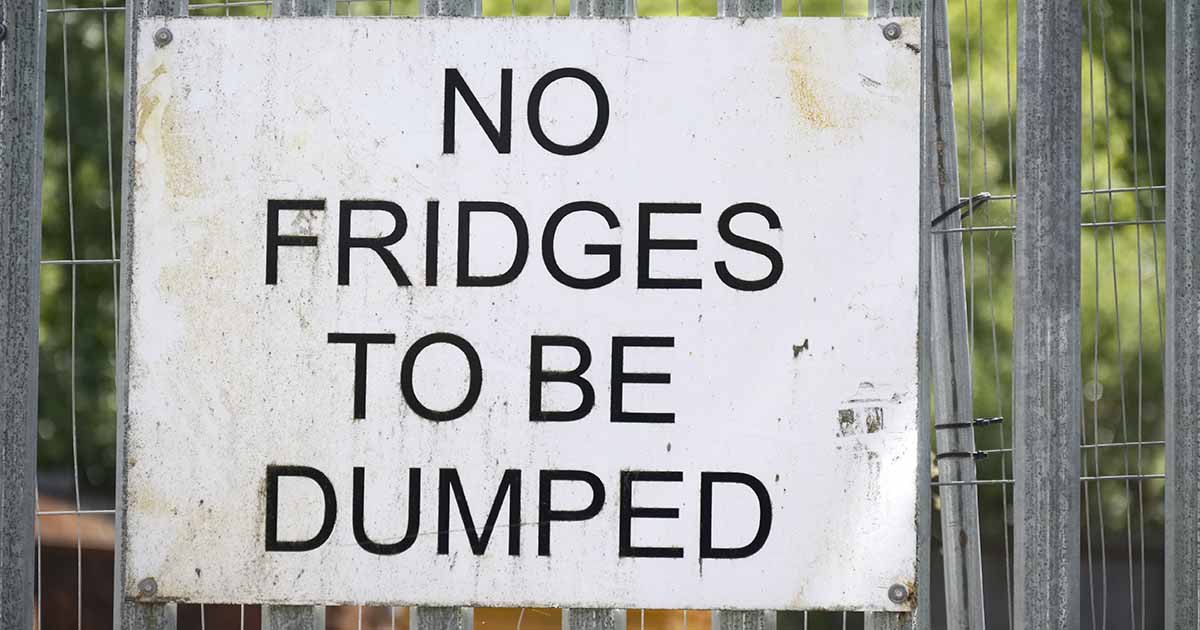
Appliances are complicated, and some might say with the latest features on modern appliances, they are even fascinating pieces of tech. With all their functionality, they take a lot of materials and components to work correctly.
While it’s always beneficial to recycle these components, it’s not as simple as melting it all down together - the recycling process is complex and often involves several different companies, locations, and facilities to complete.
How to Recycle a Fridge
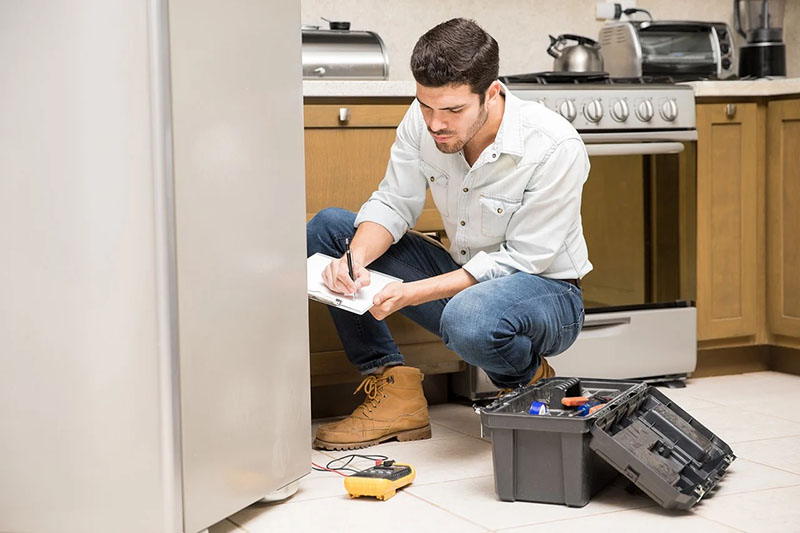
Fridge-freezers are the largest white goods most people are likely to own, and getting rid of them can be difficult and time consuming! There are plenty of ways to get your fridge to the recycling plant if you know where to look, however.
Arrange a collection: Due to the complex nature of fridges and freezers and potential hazardous materials, the best collection method is using a Man and Van collection to ensure they are not damaged in transit to the recycling facilities.
Contact your council: They may collect your fridge, but check the details and any fees involved. This can take some time to authorise, however, and your council may charge you for the service. Always check the rules of your local authority before you put your fridge out for collection - you don’t want to run into unexpected fees or accused of fly-tipping!
Take it to the tip: If you have a van, a trailer or a big enough car, you may be able to take your fridge to the tip yourself. While household recycling centres are guaranteed to responsibly recycle your rubbish (it’s in the name), you may need a permit to take a large vehicle to your local tip facility. Don’t forget to check that your tyres are pumped up for a heavier load, too!
The Fridge Recycling Process
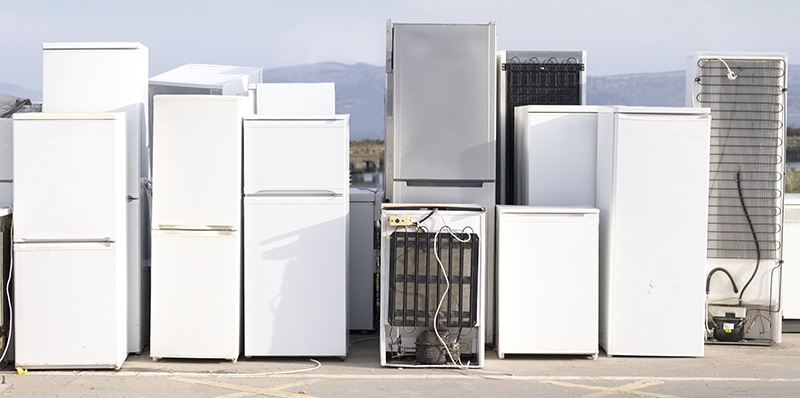
With refrigerant, fluid and gas to contend with, fridges are arguably the most complicated appliances to recycle. The process involves several different steps and facilities designed to keep all the materials clean, contained and usable. These steps may not be in order depending on the recycling facility processing the fridge.
Gases and liquids are removed: Fridges use a combination of synthetic lubricant (oil) and refrigerant gases to work. Before the fridge can be recycled, these components need to be removed - this is achieved by drilling into the machine and pumping them out safely.
If the chemicals are from modern appliances, they can be stored and processed to use again. With older appliances, these materials are dangerous to the environment and is why fridges and freezers need to be transported carefully for disposal instead of being dumped in skips.
The insulating foam is processed: This step is up to the discretion of the company, but it usually involves a self-contained process that neutralises or stores the gas to prevent it from escaping into the atmosphere. Insulating foam is where the fridge stores its gases, which can be incredibly damaging to the environment depending on the age of the fridge. If the gases are too harmful to be recycled, they’ll be safely destroyed at a waste management facility.
The fridge is shredded: To reclaim materials, they first need to be in manageable chunks. The recycling facility will shred the fridge down into small pieces, which are then sorted into ferrous and non-ferrous materials. Since ferrous materials are magnetic, this is usually done with magnets, which pull iron-rich components out of the mix and leave the rest.
The materials are sorted: Once the ferrous and non-ferrous items are separated, plastics and metals need to be sorted through. This is often done by hand, as pieces of the fridge often contain both plastic and metal to separate. Once the materials are in individual piles, they’re loaded into vans and taken to specialised facilities to recycle into new items.
How to Recycle a Washing Machine
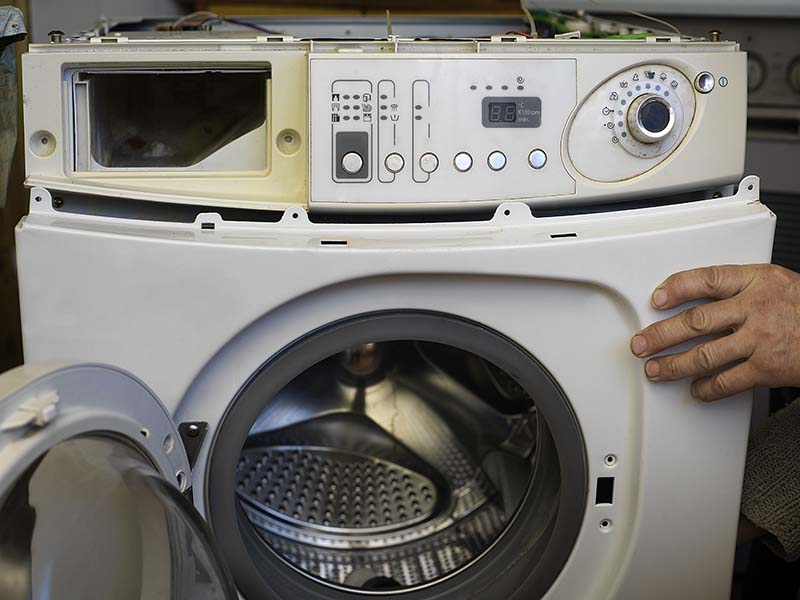
Washing machine recycling isn’t as complicated as it sounds, at least not for the middle man - once it’s at the facility, it gets trickier! Rest assured that all you need to do is get your machine to a waste management company or the tip and let recycling employees handle the rest!
Arrange a collection: A seasoned waste management company is often your best bet to recycle a washing machine correctly. With a company focused on sustainability, you can rest assured that your washing machine will be passed along to a recycling centre rather than ending up in a landfill.
Contact your council: Councils often offer bulky waste removal services, for a fee. This is usually a good way to make sure that your machine is recycled, but the council can take a lot longer than a specialised company to arrange a collection, and every local council charges a different fee. Always check the local policies before you decide on your next course of action!
Take it to the tip: With pumped up tyres, a lot of space in your car and a dash of determination, you can take your washer to the tip yourself. Bear in mind that larger cars may have a lower allowance of tip trips in a year, and if your vehicle is a van or a pickup you may need a permit before entering the tip.
The Washing Machine Recycling Process
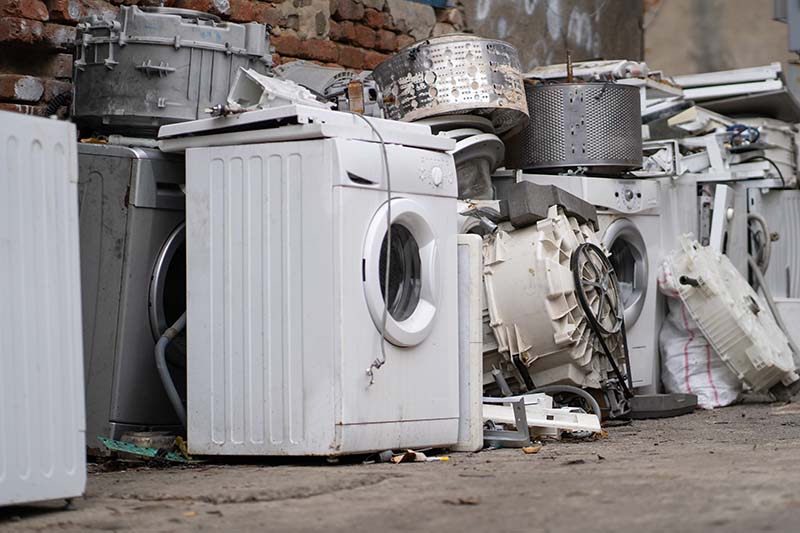
Washing machines contain plenty of metal components that can be infinitely recycled. From rare earth metals contained in the electrical components to the steel in the drum, these materials are incredibly useful and can be made into a wide range of machines, products and electronics in future.
The machine is shredded: Before anything else, the washer needs to be shredded down into manageable pieces. This is often done in a metal shredder, heavy equipment used by the recycling plant to smash down appliances, electronics and other recyclables into component parts.
Materials are sorted: Like all appliances, washers are made of a mixture of ferrous and non-ferrous metals and plastic. Magnets are used to separate ferrous metals from their counterparts, while plastics and non-ferrous metals are often separated by hand.
Materials are sent to other facilities: Plastics and metals require specialised equipment to melt down and recycle, and the original recycling plant may not have the resources to do this. For this reason, plants are often partnered with specialised facilities that take individual materials and make into new items.
How to Recycle a Dishwasher
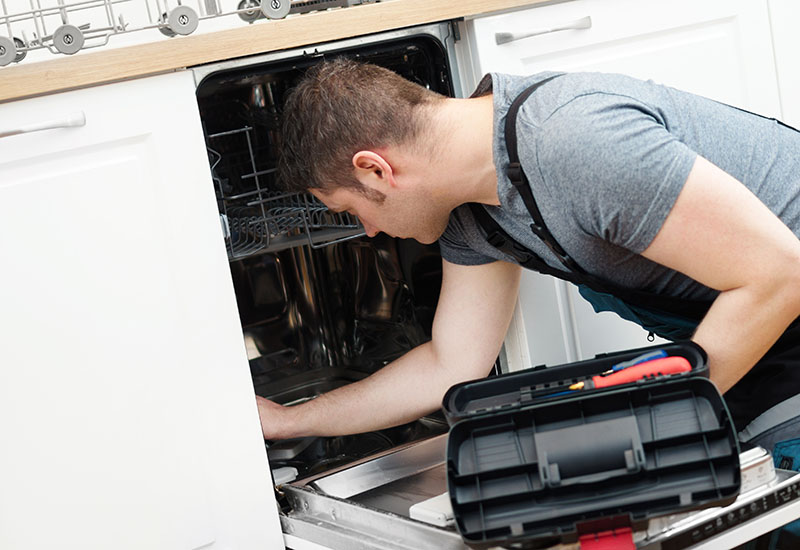
Dishwashers, like washing machines, can be bulky and difficult to move. To make things worse, they’re often integrated, which makes them even harder to get rid of. However, once you have the dishwasher out of the kitchen and ready to go, the next steps towards recycling become much easier.
Arrange a collection: Like washing machines and fridges, the easiest way to get rid of your dishwasher is to arrange a collection. If you’re clearing out more of your kitchen than just the dishwasher, booking a HIPPObag can make the whole process stress-free, and you can rest assured that as much waste as possible will make its way to recycling.
Contact your council: If you don’t mind waiting a while, your local council may offer a bulky waste collection service for a fee. Always check the rules with your local authority before booking and putting your waste out for collection - you don’t want to run into hidden fees.
Take it to the tip: If you’re happy to haul your dishwasher into your car, drive it to the tip and carry it to the right bin on the other side, your local household recycling centre will happily accept your machine. Don’t forget, if your local tip limits tip trips and you're a regular vistor, check how many trips you have left before you make your way there!
The Dishwasher Recycling Process
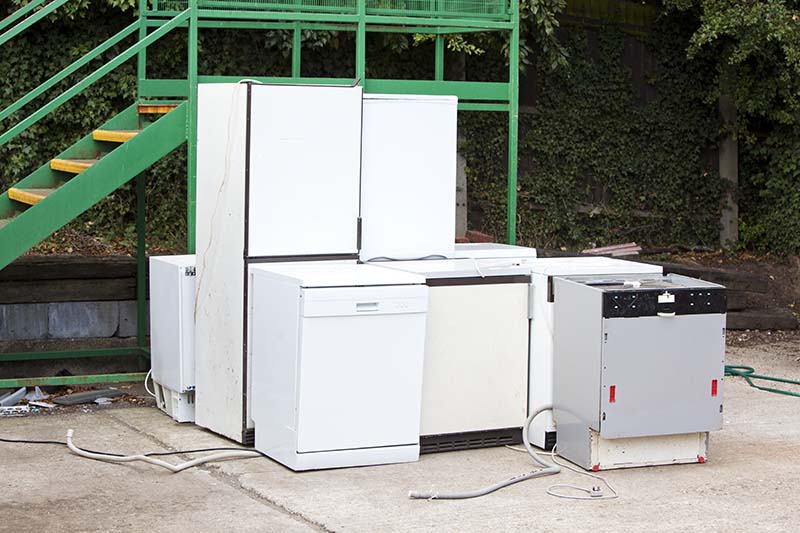
Dishwashers are like washing machines in their components and functions, and they’re often recycled in a similar way. Materials need to be extracted from the machine, separated and sent along to additional facilities to be melted down, refined and used to create new components.
The dishwasher is shredded: Everything inside the dishwasher is removed, and the machine is sent through a metal shredder at the facility. This reduces it down to small pieces that can be removed and recycled separately.
Materials are separated: Materials are sent through conveyor belts that separate the ferrous from the non-ferrous components. The metals are then sorted through to remove plastics and other attached materials.
Materials are sent to other facilities: The recycling facility will load the separated materials into vans and send them along to specialised facilities equipped to handle individual items. They will then be melted down, refined and turned into new components.
How to Recycle a Microwave
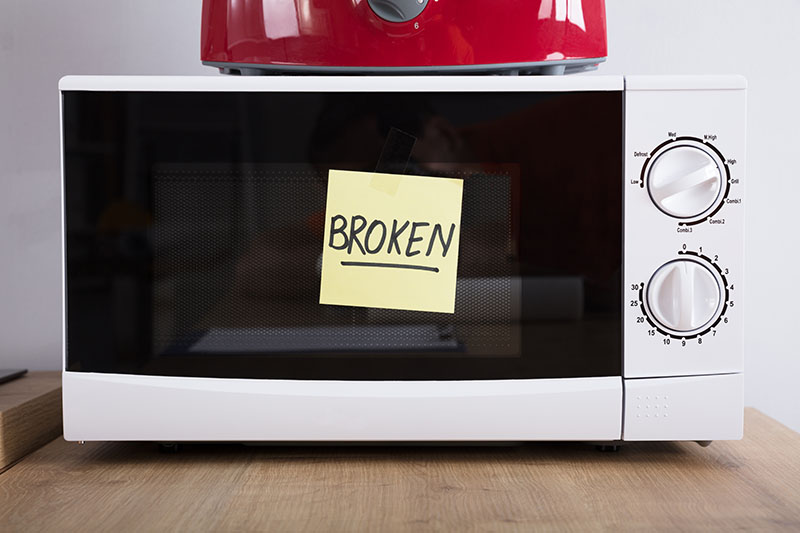
While the microwave is the smallest and most convenient appliance you can get rid of, it still requires care to dispose of responsibly. Microwaves count as electrical waste, and they should never be added to the general waste bin or left out in the rain.
Arrange a collection: While a microwave may not be worthy of collection by itself, if it falls alongside a larger clear-out, you can usually include it in the rubbish your waste management company is collecting from you. Check whether the company accepts E-waste - some skips may not allow electrical components to be thrown out alongside the rest.
Take it to a supermarket: Some supermarkets, shops and household superstores will accept small white goods like microwaves for recycling. Call ahead and check whether you can drop your old microwave off with them. If so, problem solved!
Take it to the tip: A microwave is perhaps the simplest appliance to dispose of and taking it to the tip requires nothing more than a spare tip trip and a bit of time. If you’re not sure which bin to put it in, make sure to ask one of the employees to make sure you take it to the right place.
The Microwave Recycling Process
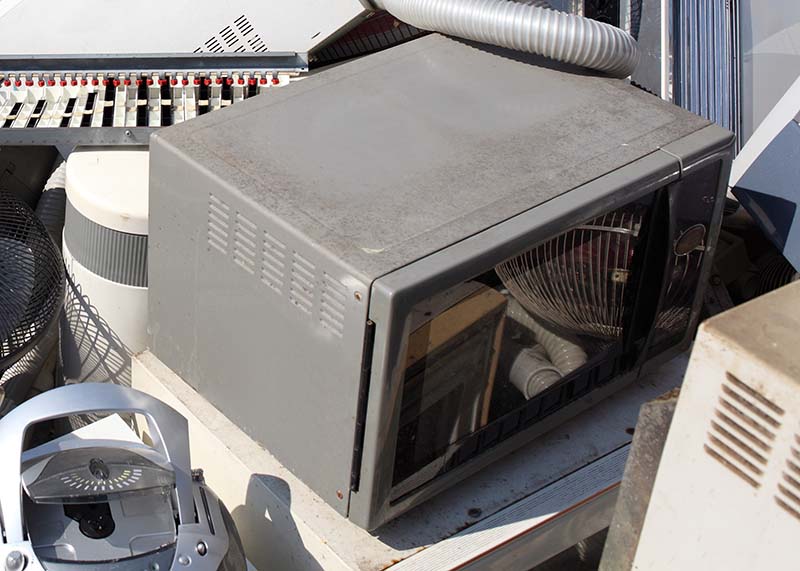
Alongside fridges, microwaves are some of the most complex pieces of tech in your kitchen. That means that they can be difficult to recycle, but it’s more than worth the effort! With components composed of rare earth metals, iron and plastic, a microwave can fuel plenty of new projects when it’s reduced and recycled.
It’s taken to a hammer mill: A hammer mill will smash up the microwave into small pieces, making them easy to sort through - just like the rest of your appliances! Often, trickier components will either be removed first or separated out before the rest of the materials.
The materials are sorted: Ferrous and non-ferrous metals are once again separated out with magnets and removed from plastic casings and components. These shards are then sorted through by hand to identify and separate combined materials.
Materials are sent to other facilities: Specialised facilities are required to reduce individual materials, refine them and remake them into components for other machines. These materials are packed into vans and sent along to partnered facilities to reach the end of the recycling process - rebirth!
Recycling White Goods Sustainably
Archaeologists have found evidence of ‘modern recycling’ methods as far back as 3000 BC, where bronze was frequently reused with evidence of furnace pits. While our technology has come on leaps and bounds since then, the principle remains the same: recycling means we don’t have to use up new resources.
If enough people recycle, we can reduce mining new materials and our impact on the environment. If you’d like to hop on the bandwagon and recycle your appliances, check out our white goods collection services to get your machines straight to the recycling plant.

